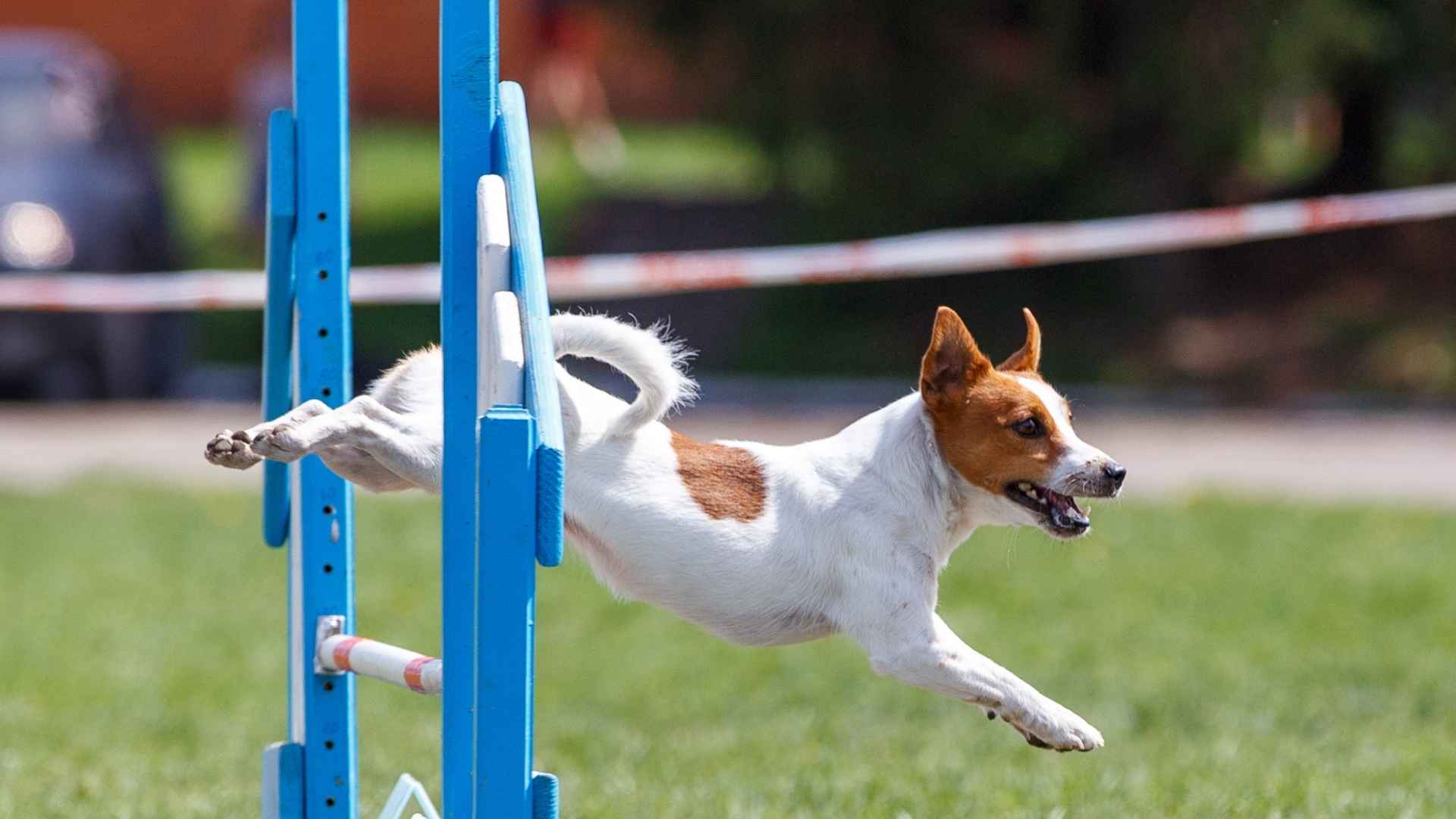Imagine a dog so fast that it can dash through the underbrush like a shadow, effortlessly keeping pace with the swiftest prey. A dog whose instinct is so sharp, it can track a scent for miles without missing a beat. Sounds like something out of a hunting legend, right? Well, these incredible dogs aren’t just myths—they’re real, and they’ve been finely honed over centuries to become the ultimate hunting partners.
Hunting dog breeds are not only athletes; they’re born adventurers, designed to navigate tough terrain, leap over obstacles, and stay focused for hours on end. With their boundless energy, quick reflexes, and exceptional intelligence, these dogs are a hunter’s best friend, pushing the limits of what’s possible in the wild.
Curious to know what makes these high-speed, nature-savvy canines tick? Let’s take a closer look at these extraordinary hunting companions!
Agile Hunting Dog Breeds
1. Labrador Retriever
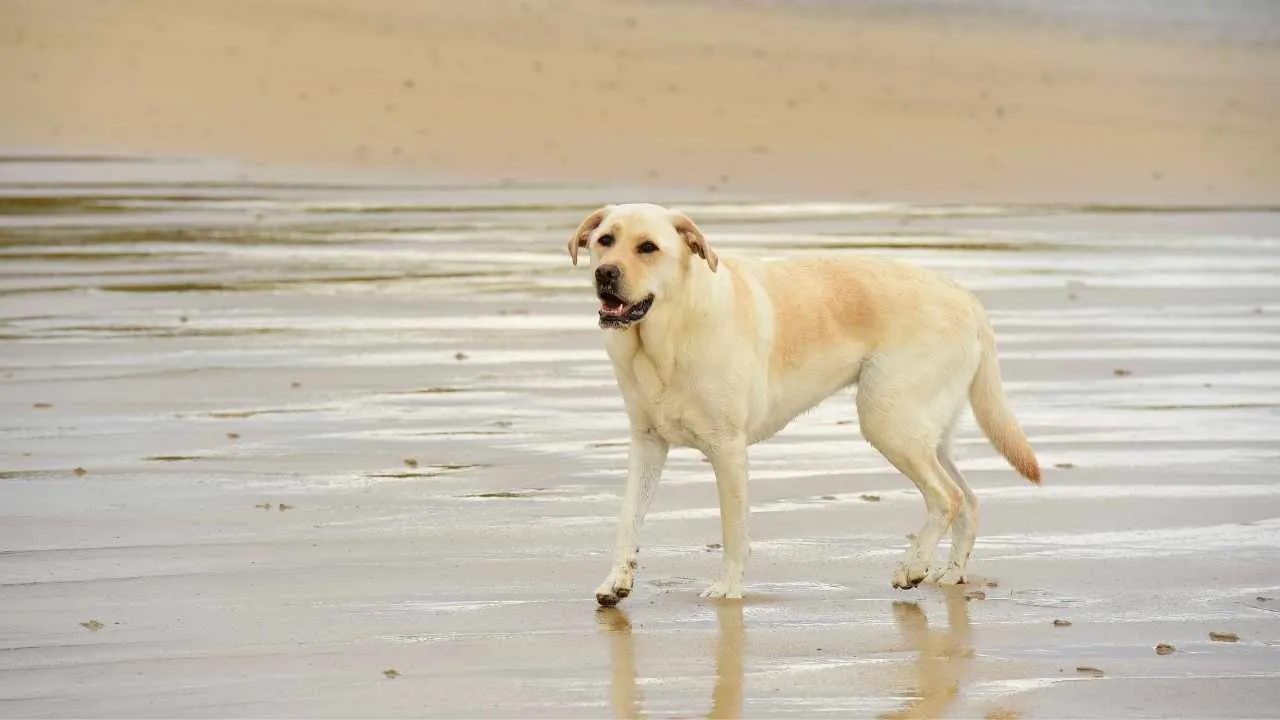
The Labrador Retriever originated from the Canadian province of Newfoundland in the 16th century. These dogs helped fishermen with tasks like retrieving nets and pulling carts loaded with fish. Initially smaller than today’s Labradors, the dogs were called St. John’s dogs. They were crossbred with English hunting dogs and then brought to England for their exceptional retrieving skills, leading to the Labrador’s development.
Labradors are energetic dogs and require daily exercise to prevent destructive behavior. Their favorite activities include retrieving, swimming, and participating in field trials, canine sports, agility courses, and hunting trips. They also excel in roles such as search-and-rescue, detection, and as service dogs, showcasing their versatile abilities.

As a multipurpose hunting companion, Labradors excel in retrieving, pointing, and flushing. Their energy and trainability make them ideal for a long day in the field. The breed’s popularity in the U.S. is reflected in its role as the top sporting breed, recognized for its friendly nature, athleticism, and versatility.
Labradors are particularly suited for waterfowl hunting, with their thick coat, webbed feet, and otter-like tail, which aids in swimming. Their strong swimming abilities and resistance to cold water stem from their Newfoundland origins. These traits also make them highly competitive in diving dog events and ideal for wet and cold hunts.
Labrador Retrievers are highly intelligent and versatile, excelling in roles from military and police forces to agility training, search-and-rescue, bomb detection, and therapy. Since the late 1800s, they’ve also stood out in dog sports like agility, obedience, and field trials, solidifying their reputation as one of the most adaptable breeds.
2. Parson Russell Terrier
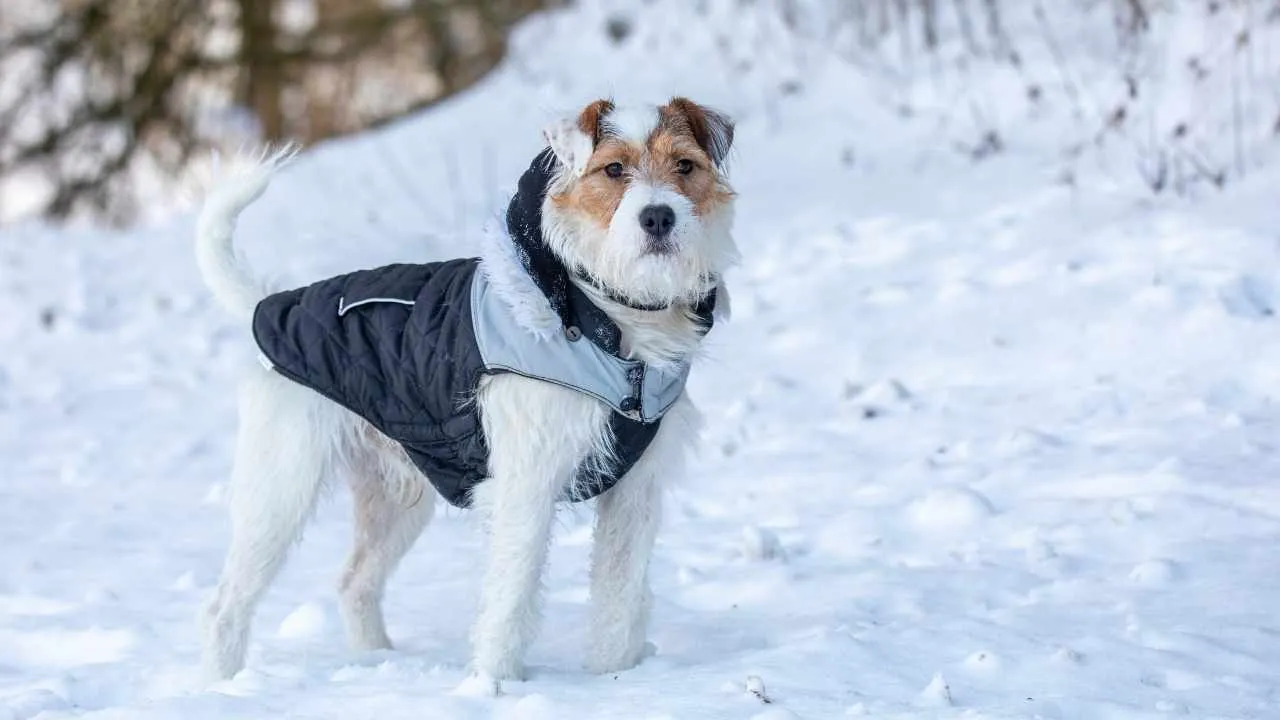
The Parson Russell Terrier, named after Reverend John Russell, was developed in the early 19th century to assist in fox hunting. Rev. Russell aimed to create a terrier that would flush foxes from their dens without attacking them.
Historically part of the terrier class—derived from the Latin terra, meaning earth—Parson Russells were bred to pursue prey both above and below ground, including foxes, badgers, and rats.
Their structure reflects this purpose: square in silhouette with a narrow chest and flexible rib cage for maneuvering through tunnels. The ideal height at the withers is 12 to 15 inches, with a weight between 13 and 17 pounds. Field-related scars are not penalized in show dogs, emphasizing their working roots.
These terriers are full of energy, tenacity, and instinctive hunting drive. Without sufficient mental and physical stimulation, they tend to redirect their natural behaviors, such as digging, barking, and chasing, toward household disruptions. Their powerful prey drive and alertness often lead them to “self-assign” jobs like guarding, car chasing, or pest hunting.
WebMD states this breed can be affected by congenital deafness, a condition associated with white coat coloration and hereditary factors. While it doesn’t cause pain, it can make training more difficult and pose safety risks. Responsible breeding practices—especially avoiding deaf parents—can help minimize the incidence of this condition in future generations.
3. German Shorthaired Pointer
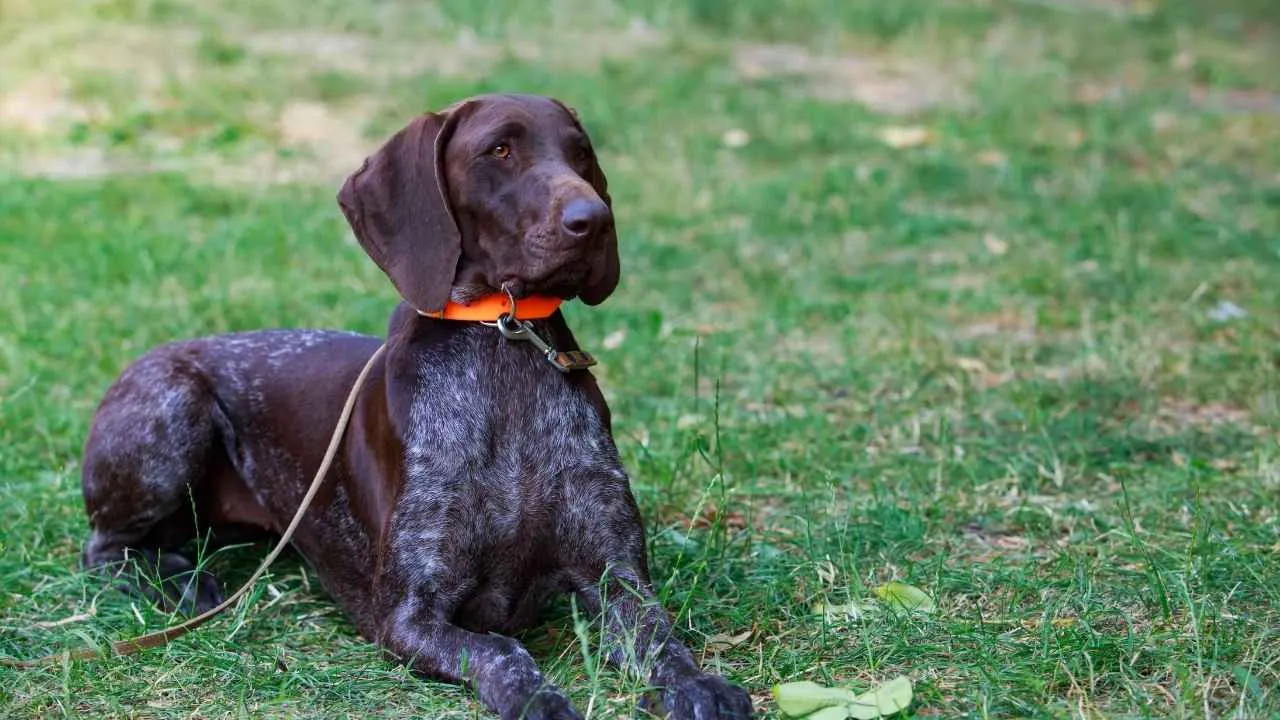
German hunters developed the German Shorthaired Pointer (GSP) in the 1800s to be a versatile, all-purpose bird dog. Through generations of selective breeding, they created a dog capable of pointing, tracking, retrieving, and swimming, with natural instincts suited to various types of game, including upland bird hunting.
Structurally, the GSP has a streamlined, symmetrical build designed for speed, agility, and endurance. Functional features like webbed feet back their noble appearance for swimming, deep chests for lung capacity, and long, powerful muzzles ideal for holding a game. Their physical makeup perfectly matches their active, multi-terrain hunting style, enabling them to transition smoothly between land and water.
These dogs are known for their strong prey drive and high energy levels. Left unchecked, these traits can lead to bolting, fence-climbing, and other escape behaviors when prey is nearby. As a result, they should always be kept in secure areas and monitored during outdoor activity. Their athleticism and mental alertness require more than casual walks—they thrive on high-energy play, swimming, running, and mentally stimulating tasks.
Training is essential for GSPs, particularly during their early years. Without structure and regular outlets for their energy, they may develop destructive behaviors. Fortunately, they are highly intelligent and eager to please, making them excellent candidates for obedience training and dog sports. Early socialization and consistent reinforcement can channel their drive into productive habits.
GSPs are affectionate and people-oriented, making them great companions for active families. They are generally good with children and other dogs, but may be overwhelming for very young kids due to their boisterousness.
4. Golden Retriever
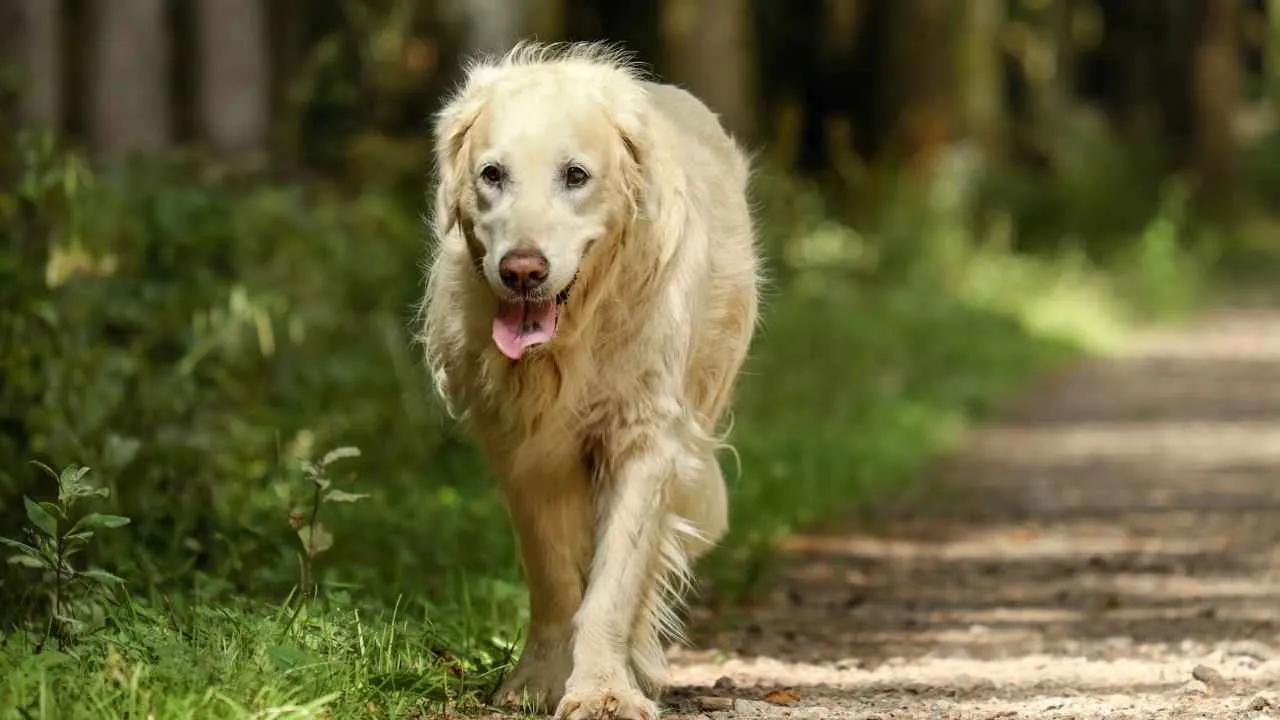
The Golden Retriever was developed in 19th-century Scotland as a gun dog and water retriever, bred specifically to assist hunters in recovering game birds. Known for its strength, stamina, and swimming skills, the breed features a thick, golden-hued coat and a robust, medium-sized build.
First shown in England in 1908 and recognized by the American Kennel Club in 1925, the breed has since become one of the most beloved dogs in the U.S.
Golden Retrievers are known for their friendly, gentle disposition and eagerness to please. These traits, combined with their intelligence and trainability, make them excellent companions and working dogs. They excel as guide dogs, search-and-rescue workers, and great family pets, fitting easily into both active and affectionate households.
This breed requires regular mental and physical challenges. Golden Retrievers thrive in field training, agility exercises, and competitive sports such as obedience trials, dock diving, and tracking events. Their versatility stems from their natural retrieving instincts and enthusiasm for both land and water activities.
Though highly trainable, Golden Retrievers can be distracted in their early learning stages. Their joyful personality can initially make leash training a challenge, but it also makes them engaging and eager students once they settle into a routine.
What truly sets Golden Retrievers apart among hunting breeds is their exceptional sense of smell and their soft-mouthed retrieval. Their olfactory strength makes them effective trackers, even over long distances. In the field, they demonstrate the intelligence to adapt, problem-solve, and gently handle game—an ideal combination of skill, instinct, and discipline.
5. English Springer Spaniel
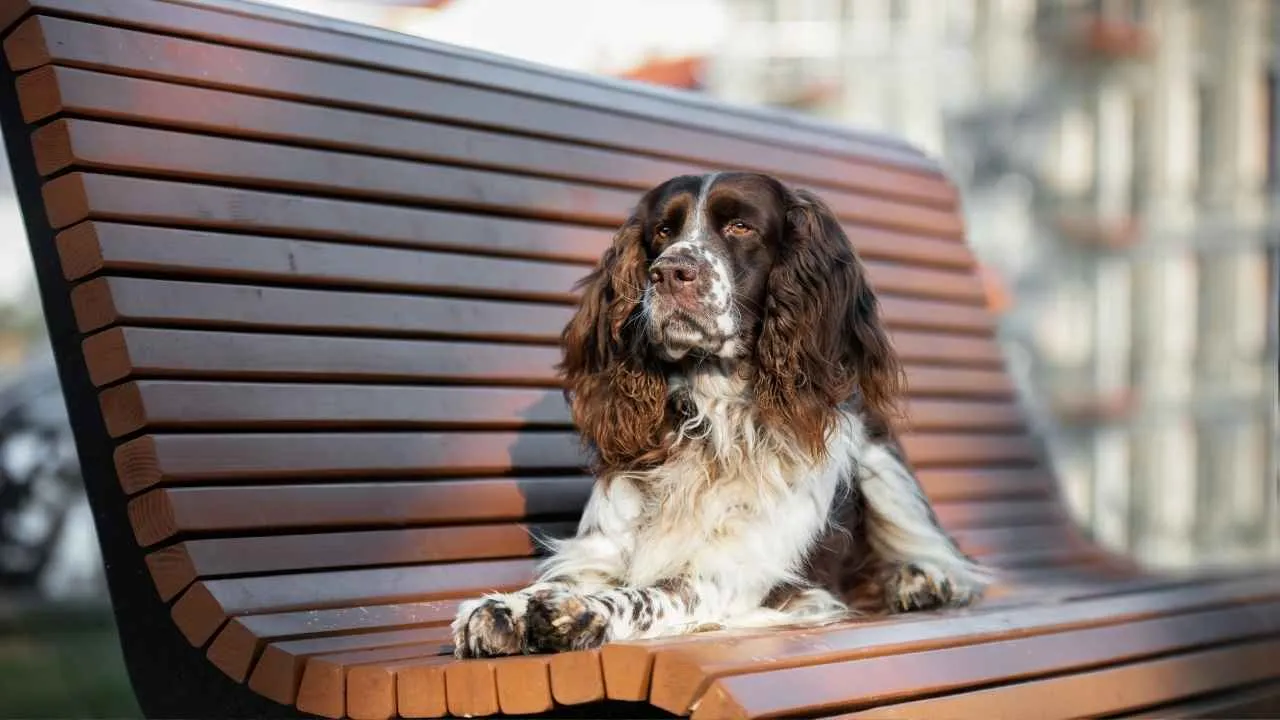
The English Springer Spaniel is a lively and affectionate breed originally developed for hunting, particularly to “spring” game birds into flight for hunters. Today, they retain this enthusiastic work ethic, whether out in the field or playing fetch in the park. Known for their stamina and athleticism, they are always ready for action and need an active lifestyle to stay happy.
This breed holds a long history, appearing in 16th-century art and officially recognized by the AKC in 1910. They have remained a favorite among hunters and families alike due to their versatility, spirited temperament, and strong bond with humans. Their popularity continues, ranking them among the top 30 breeds in the U.S.
English Springer Spaniels come in two types: bench and field. Bench Springers are bred for the show ring, featuring longer, more feathered coats, while field Springers are leaner, with shorter coats and docked tails to suit their active working dog breed status. Both types share the same energetic and eager-to-please disposition.
As noted by Petplan, these dogs have a natural affinity for water, and enjoy swimming as much as they do land-based activities. This trait likely stems from their origins as waterfowl retrievers. Their love for the outdoors means they thrive in secure spaces where they can roam freely and safely.
They are also used in professional roles such as police detection work due to their keen sense of smell and tracking abilities. While affectionate and loyal, they dislike being left alone and may become vocal or anxious when isolated for too long.
6. Jack Russell Terrier
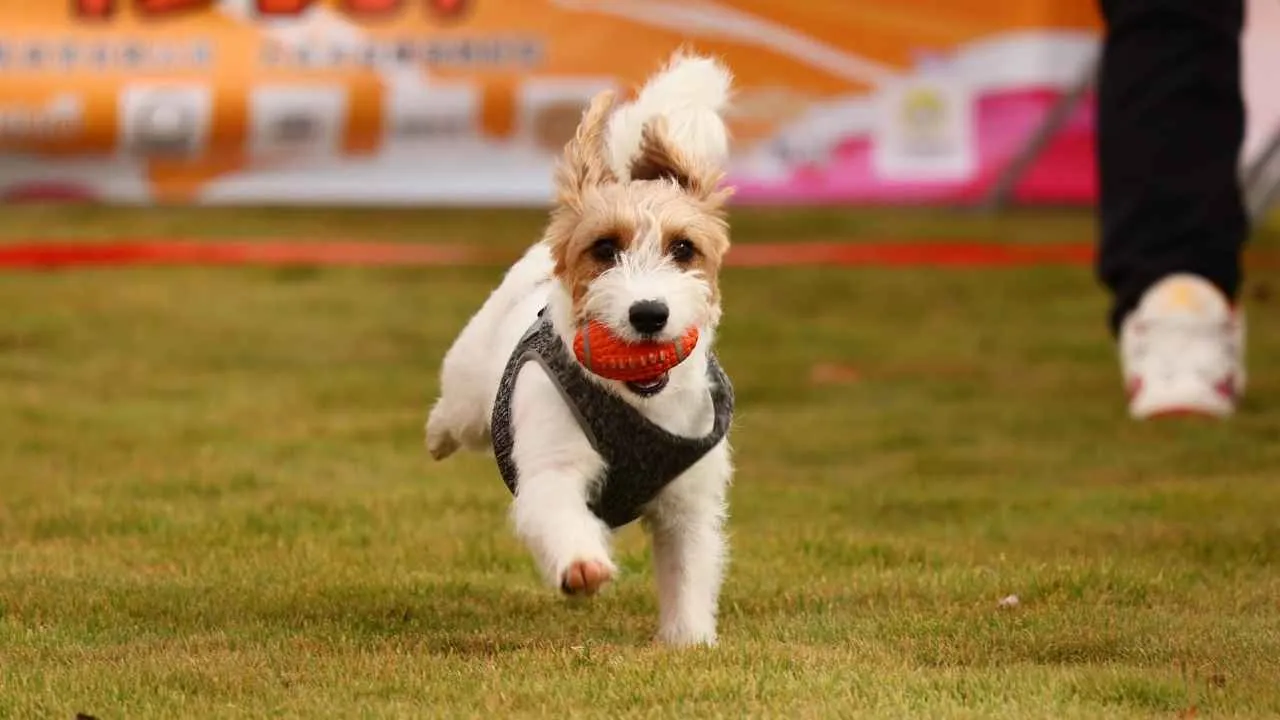
The Jack Russell Terrier, developed in 19th-century England by Rev. John “The Sporting Parson” Russell, was originally bred for fox hunting above and below ground. Known for its high energy, courage, and tenacity, the breed was crafted for speed and compactness, allowing it to pursue prey on foot and flush foxes from their burrows.
Physically, Jack Russells are small, athletic dogs about the size of a fox, with long legs and a double coat—smooth, broken, or rough—that is predominantly white with black, tan, or tricolor markings. Their iconic “button ears” fold forward, and tails may be docked short for working use. Bred for utility, their coats are weatherproof, and their build is suited to vigorous outdoor activity, especially in rugged terrain.
These terriers are extremely vocal, alert, and independent, characteristics rooted in their original job of flushing prey with their bark. As a result, they make excellent watchdogs but require careful management outdoors to curb their chasing instinct. Due to their intense prey drive and natural curiosity, they should be leashed during walks to prevent them from chasing cats or small animals.
These dogs need an active lifestyle, structured play, and mental stimulation to stay content. Jack Russells are also enthusiastic diggers, another trait tied to their hunting origins. They may dig out of instinct, boredom, or for attention.
The breed gained recognition through Uggie, a film star who earned a paw print on the Hollywood Walk of Fame, and Bothie, a Jack Russell who traveled with explorer Sir Ranulph Fiennes to both the North and South Poles. These feats highlight the breed’s adaptability, spirit, and loyal companionship.
7. German Wirehaired Pointer
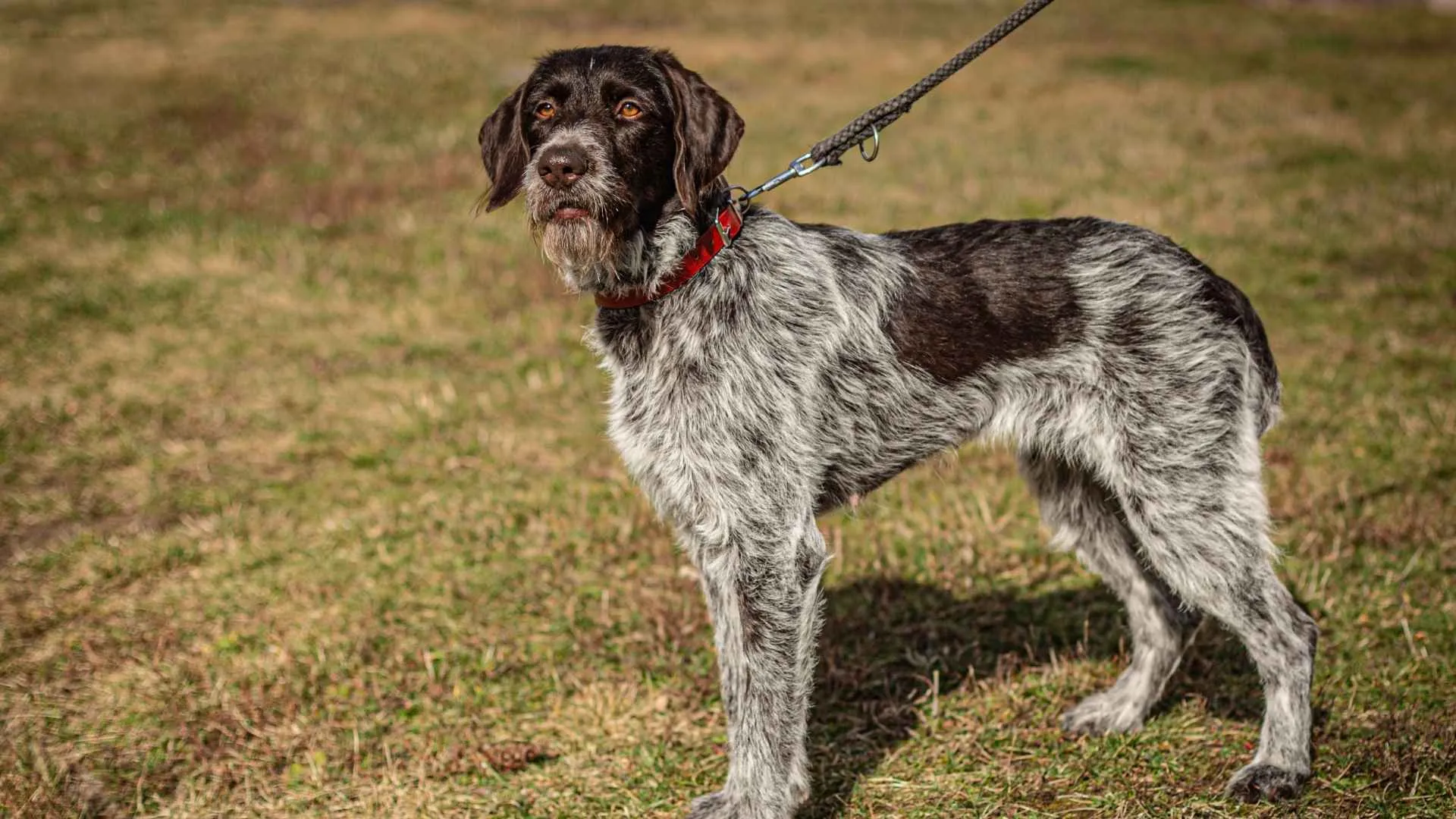
The German Wirehaired Pointer (GWP) is a medium to large sporting dog, known for its athleticism, loyalty, and energetic nature. With a typical height of 22 to 26 inches and a weight range of 50 to 70 pounds, these dogs are built for endurance and versatility.
As members of the Sporting Group, GWPs are alert, active, and highly instinctual. Originally bred as versatile hunting companions, they excel on land and in water, adept at tracking, pointing, and retrieving a variety of upland game. This makes them ideal for outdoorsy owners or hunters seeking a reliable all-rounder.
These dogs have a strong desire to work and thrive when given purposeful tasks. Although intelligent and eager, they can display an independent streak, sometimes choosing to listen only to handlers they respect. This means consistent training and mental stimulation are essential, especially for new or inexperienced owners.
The GWP was developed with a multi-functional role in mind, unlike many English breeds bred for specialized tasks. German breeders focused on creating a single dog that could hunt across various terrains and retrieve in water with equal skill. As a result, the breed remains a popular choice for those wanting both a sporting companion and a loyal family dog.
Often nicknamed “Wirehair” or “GWP,” these dogs are particularly skilled at retrieving. Most pups naturally show this instinct early on, requiring only basic guidance to become proficient. This makes the breed stand out in hunting circles and among dog sport enthusiasts alike.
8. Brittany
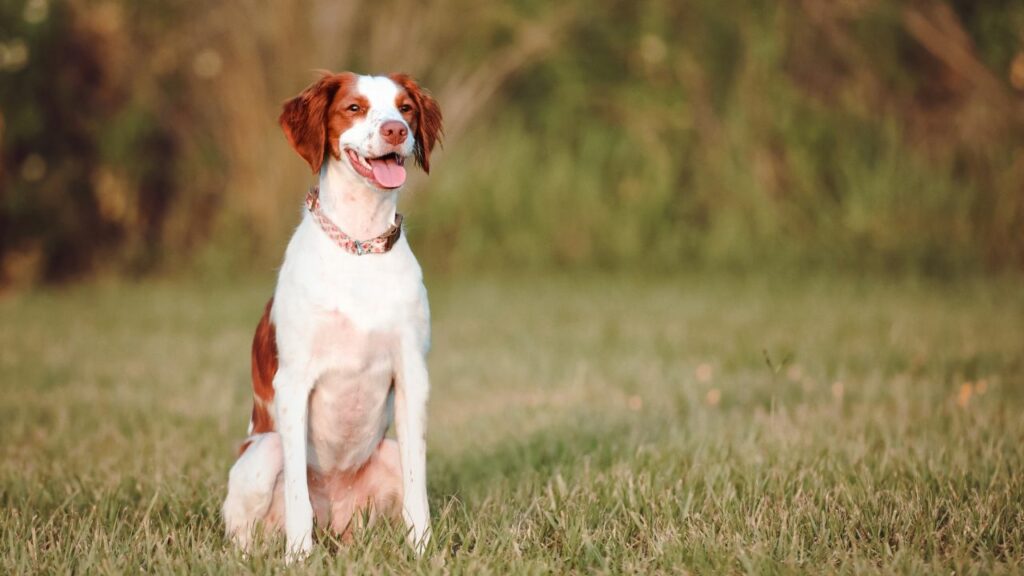
The Brittany, also known in Europe and Canada as the Brittany Spaniel, hails from the French province of Brittany. Originally developed in the mid-1800s, the breed likely emerged from a mix of pointers and spaniels or possibly spaniel-setter crosses. Early illustrations from the 1600s hint at their existence, but it wasn’t until the 19th century that they were formally recognized as Brittanys.
Highly valued for their hunting instincts, Brittanys excel at scenting, pointing, and retrieving game—especially birds like ducks, pheasants, woodcocks, and partridges. Their keen sense of smell and stamina make them ideal field dogs. Due to their strong prey drive, they require careful supervision when off-leash, as they may chase small animals, including pets.
Brittanys are one of the most versatile bird dogs, known for staying within close range of their handler and navigating both land and water with ease. Their coats, typically white with orange or liver patches, are dense enough to protect them from thick underbrush but short enough to prevent tangling, allowing them to move swiftly through various terrains.
With a high-energy temperament, they thrive on 1.5 to 2 hours of daily activity, ranging from walks and jogs to interactive games and canine sports. Their agility, intelligence, and eagerness to please make them excellent candidates for activities like obedience, rally, flyball, dock diving, and agility competitions.
The American Kennel Club officially dropped “spaniel” from the breed name in 1982, acknowledging that Brittanys behave more like pointing dogs than traditional flushing spaniels. This reclassification reflects their hunting style and distinguishes them from breeds with more typical spaniel characteristics.
Brittanys are compact yet athletic, standing about 20 inches tall, with a leggier build than spaniels but smaller than setters. Their soft facial expression and high-set ears convey alertness and enthusiasm.
9. Rat Terrier
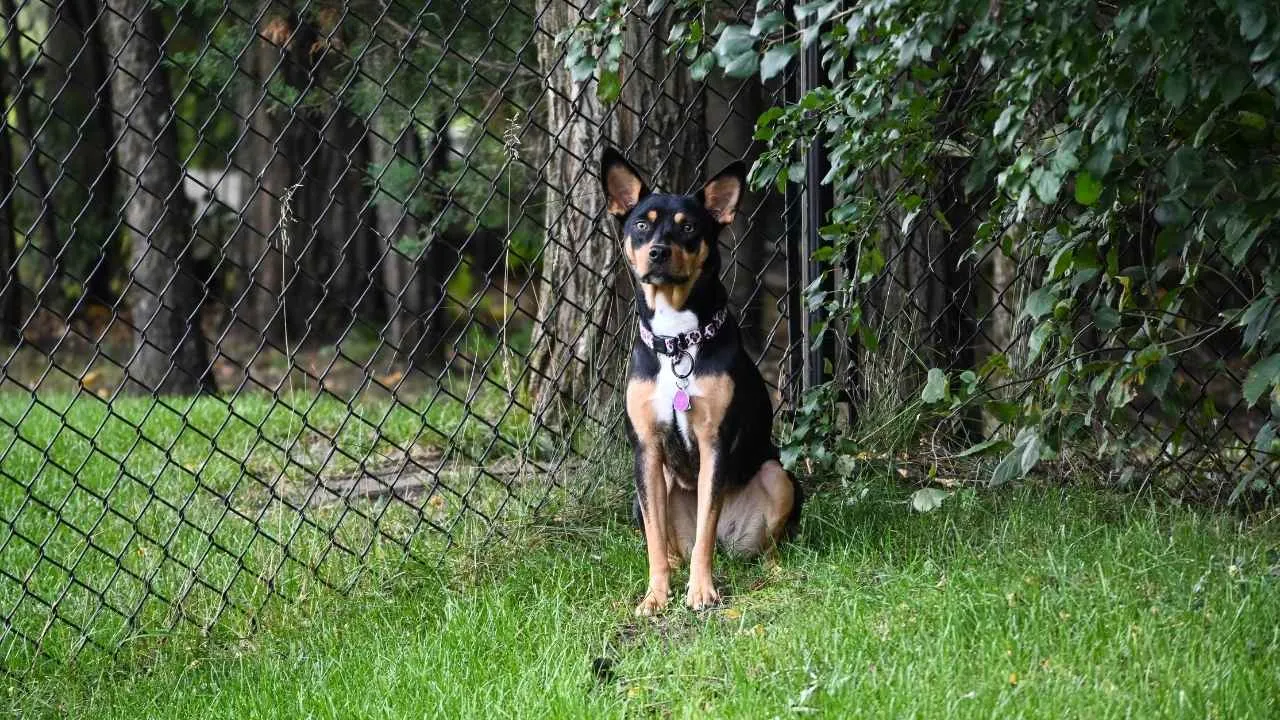
The Rat Terrier originated in the 1820s Britain from Smooth Fox and Manchester Terriers and was later refined in the U.S. with Whippet, Beagle, and other breeds to boost hunting ability and color diversity. By the late 1800s, they were prized American farm dogs, famed for vermin control. Though chemical pest control reduced their numbers mid-century, they remained active and earned AKC recognition in 1999.
Compact and muscular, Rat Terriers have deep chests, strong limbs, and high-set ears. Their short, smooth coat comes in varied colors like red, sable, chocolate, and blue and white. Built for agility and endurance, they reflect their working heritage.
Known for their hunting prowess, Rat Terriers once eliminated thousands of rats in a single day. Today, their instincts live on through groups like New York’s R.A.T.S., where they help control urban rodent populations. Their diverse ancestry—including Beagle, Whippet, and Italian Greyhound—makes them intelligent, trainable, and versatile.
Calmer than many terriers but still active, they need daily exercise and mental engagement. Without it, they may resort to barking, digging, or chewing. Structured play and companionship suit them best.
Featured in classic films and embraced by celebrities, Rat Terriers have gained renewed popularity for their lively temperament, intelligence, and adaptability in modern homes.
Conclusion
Agile hunting dogs excel across terrains, blending instinct, speed, and endurance. Breeds like the Chesapeake Bay Retriever and Boykin Spaniel are prized duck dogs and upland hunting companions, known to flush birds, retrieve waterfowl, and point upland birds with ease. Whether you’re after a few ducks or a tracking game, these versatile hunting dogs deliver.
From other retriever breeds to Cocker Spaniels and English Setters, these natural hunters possess the ability to navigate the field. Even herding dogs like Border Collies and Australian Shepherds prove agile and sharp, skilled at herding livestock and tracking furred game.
Whether you prefer small dogs or big dogs or are choosing between two dogs, these tough dogs offer the perfect balance of drive and companionship. Many also make the ideal family dog, proving that in the canine world, avid hunters can also be the perfect dog at home.


